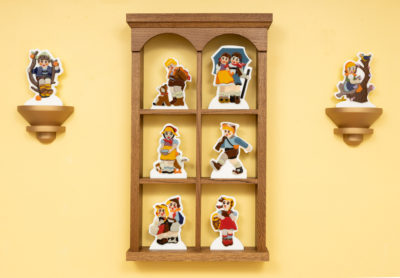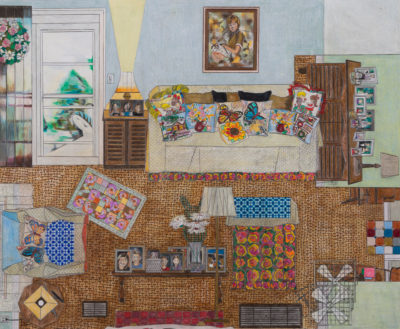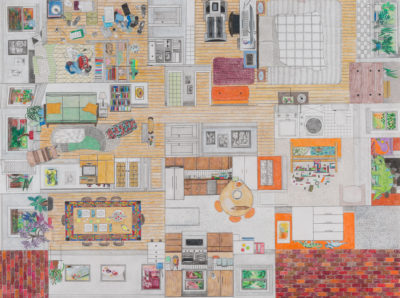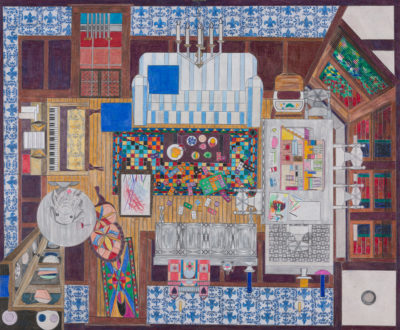Catalog Forward by Dana Bassett
We humans have created infinite ways to meter and divide the space we perceive between when the sun rises and falls, the force we refer to as time. This force is constant, though the way we experience it changes just as much, accelerating and slowing as we pass through the various, devastatingly cliche moments that punctuate the space between life and death: childhood, schooling, relationships, parenthood, middle age. If we are lucky, we are told, we make it to retirement, the glorious trophy at the end of the slog. But what about that slog?
As we pass through these thresholds, it is common, dare I say natural, to take inventory of where one falls on the path we have imagined for ourselves. This impulse stands out in Swing State, an exhibition that considers the space of middle age, not as a bridge to another time but as a destination in itself.
When time’s unwavering current starts to feel like an overwhelming tide, I often return to John-Paul Satre’s confoundingly simple adage, “existence precedes essence.” Otherwise put, our purpose and impact on the world is defined only by the sum of our living hours. Our actions determine our character, and not the other way round.
In Satre’s brief yet compelling play, No Exit, three characters force each other to re-evaluate their lives from the settees of Hell. Conspicuously absent is any type of glass, or reflection. The characters can only “see” themselves through the impressions of the others in the room. Similarly, in Swing State we never directly see the exhibition’s subject as one might in a portrait.
At first read, the works may seem autonomous and unconnected, but you should not be fooled by the plain, descriptive titles. The distinct compositions present a composite portrait of our absent subject, the artist, Ann Toebbe. Though the interior spaces do not all necessarily belong to Toebbe, the exhibition guides us through a personalized tour, with her hand pointing out specific details.
We follow Toebbe as she ricochets in a non-linear universe of flat interiors. The paintings traverse the kitsch comfort of overstuffed pillows and rounded edges of Ohio and Kentucky, where Toebbe spent her formative years, to the jumble of unfamiliar homes she encounters in her present day life as a mother and artist. Toebbe operates as an investigative journalist, archiving her in-law’s in Seattle and the homes of acquaintances like her daughter’s piano teacher. The slog is all around her.
In her recollections of these spaces, we see the possessions of others but we also see Toebbe’s complete mastery of materials: house plants, armoires, family photos, ornate pillows and children’s toys all receive her signature multi-layer, multi-perspective treatment. The details feel lovingly over-the-top, and only a little bit cynical. Duly, Toebbe applies the same wry humor and critical eye to her own interior. Amongst the heavily knick-nacked homes and gingham curtains, Toebbe’s decidedly restrained, midwestern sensibility permeates these homes. Or perhaps this sensibility permeates Ann Toebbe.
It’s hard to tell. Time is funny like that. Sort of like when you return to spaces and objects that you knew as a child and discover that everything feels different because you have changed. In this way, Swing State is not just a clever reference to the artist’s Ohio origins and the political baggage that comes with it, but also a reference to the complexity inherent in the supposedly static space of middle age. It is not, as so many assume, a fixed spot, but actually a fulcrum. A central point from which to review where you have been and, for once, decide where you are going.










